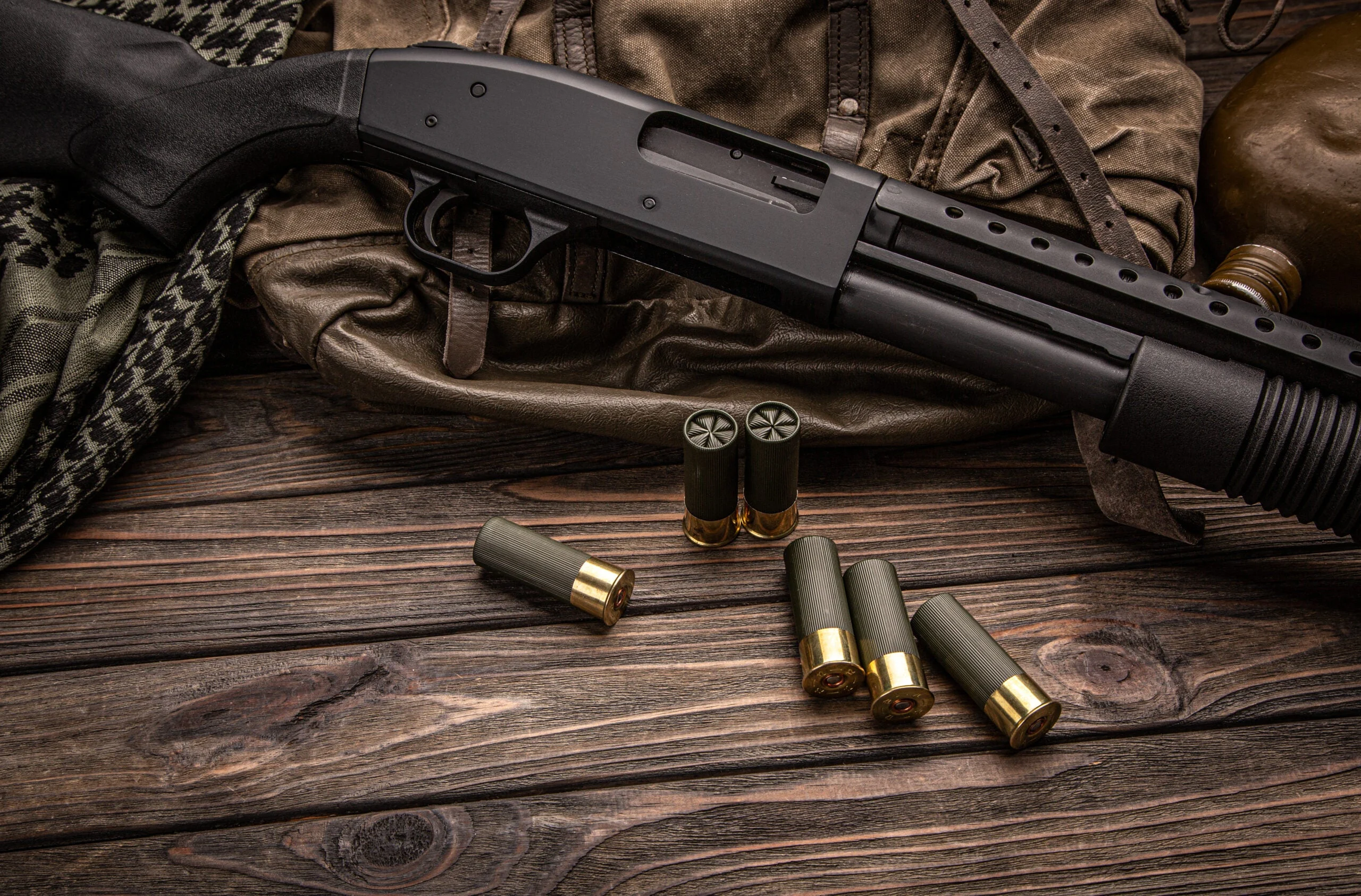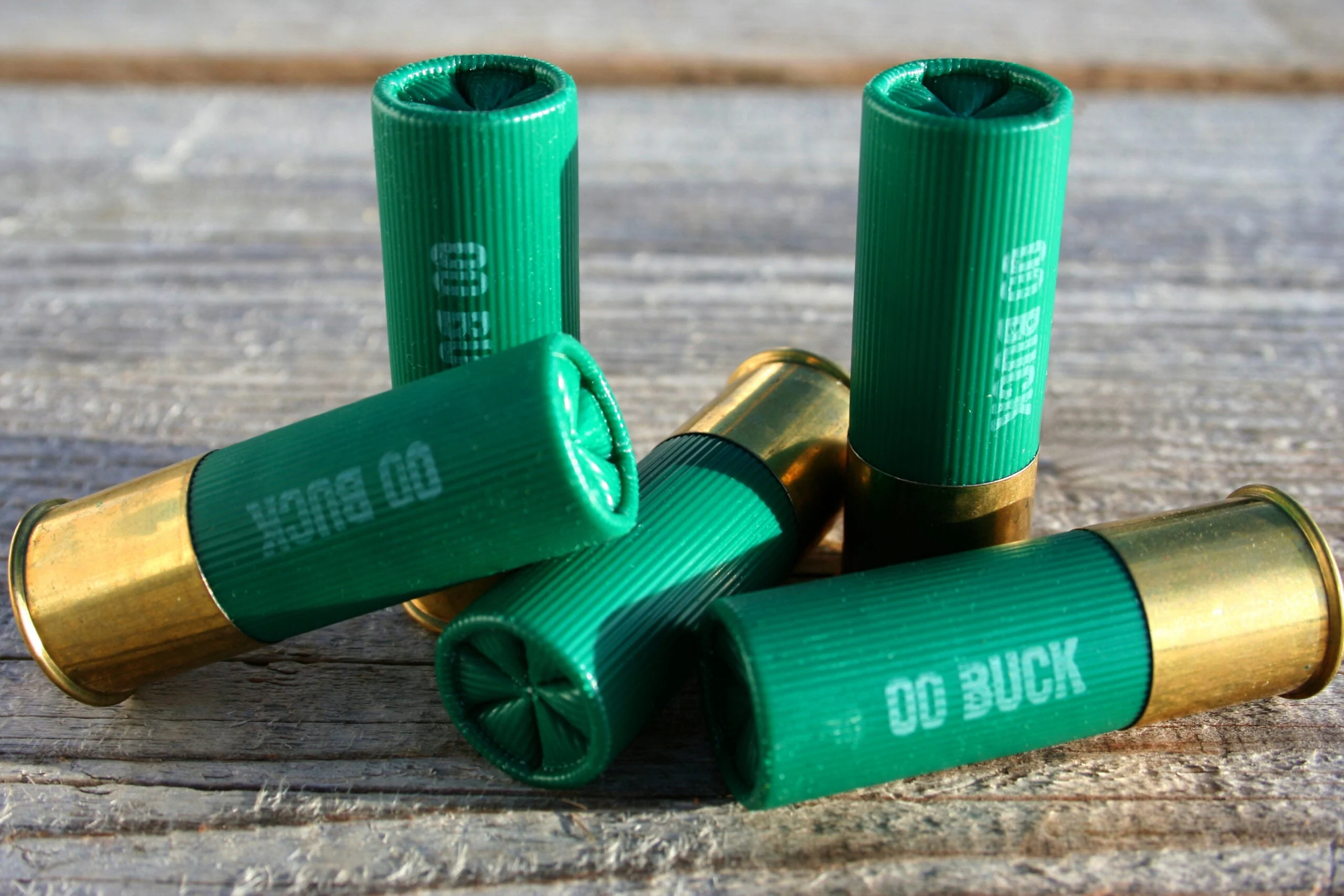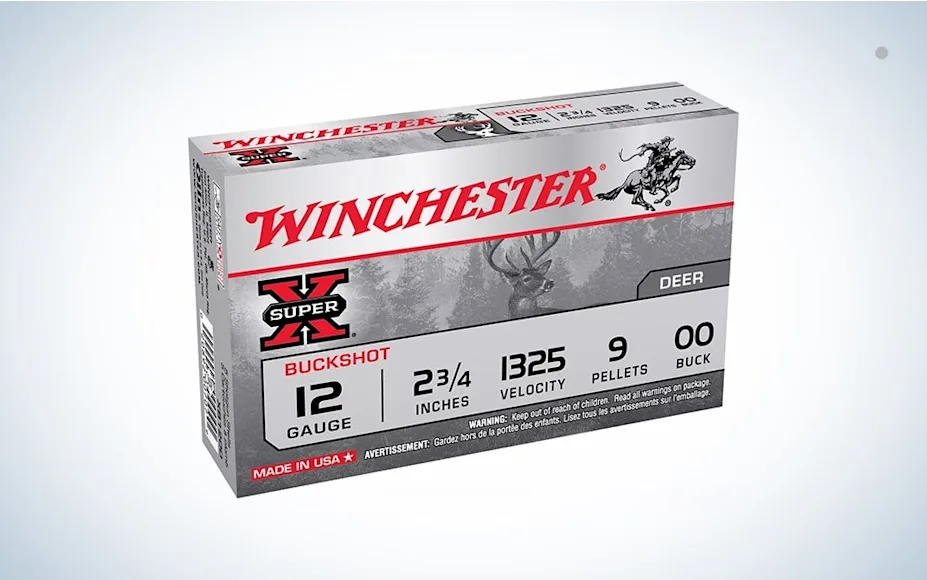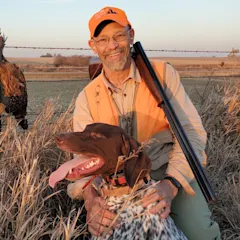_We may earn revenue from the products available on this page and participate in affiliate programs. Learn more ›
_
Buckshot, as its name suggests, is shot for bucks. A load of buckshot consists of a few very large pellets loaded into a shotgun shell. It works on bucks, and it works on does, too, of course. At close ranges inside 50 yards, buckshot is lethal on thin-skinned targets, from bobcats to coyotes to leopards to people. Buckshot can turn a mild-mannered bird gun into a fearsome close-range weapon
.
The large pellet size of buckshot makes it effective. It comes in sizes as large as .36 caliber—the diameter of a 9mm bullet—and a 12-gauge hull can hold eight of those .36 caliber, 000 pellets, or more smaller buckshot pellets. When a load of buckshot strikes a target at close range, it makes several wounds within a few inches of one another, and the results are devastating.
The line between buckshot and birdshot falls between F shot, the largest bird shot, which is .22 caliber, and No. 4 buckshot, which measures .24 inches. No. 4 is the smallest buckshot size. In American nomenclature, buckshot sizes
run 4, 3, 2, 1, 0, 00, 000 (known as “single-, double-, and triple-ought”). In England and Europe, buckshot nomenclature follows a different system—LG (large grape, originating from musket shooting), MG (medium grape), SG (small grape), SSG (small small grape), and all the way down to SSSG. Within this system, SSG is the equivalent of 00 buck, and similarly the most popular among shooters.
What is buckshot, and what can it do?

At close range, buckshot will prove effective on predators like coyotes and foxes, game animals like whitetails, and humans as well, if you use a shotgun for home defense. Adobe Stock / solidmaks
Buckshot is at its most effective inside 50 yards, and it’s best at closer ranges. Within 50 yards, it’s a lethal cartridge for all manner of thin-skinned targets: predators like coyotes and foxes, game animals like whitetails, and humans as well, if you use a shotgun for home defense. The multiple wounds caused by a load of buck have been compared to getting shot by several pistols at once. That’s not entirely accurate, as pistol bullets have more velocity and energy than buck shot pellets, but buckshot can still penetrate to vital organs, and a buckshot wound is as serious as gunshot wounds get.
What can’t it do?
Because the pellets are soft, round lead, even the best buckshot doesn’t penetrate thick hides well. Therefore, while buckshot is lethal to thin-skinned game, as well as to humans, it is not a good choice for animals like pigs and bears. If you’re after thick-skinned game with a shotgun, you’re much better off shooting a slug than buckshot.
Despite what you see in the movies, buckshot doesn’t pick up its victims and fling them backward. Nor, again per the movies, is buckshot an area weapon. You can’t point a shotgun in the general direction of a target and expect to hit it, especially at close range, as in a home defense situation. Buckshot follows the same physical rules as smaller shot does: it starts out as a near-slug of bore diameter and spreads as it encounters air resistance as it flies downrange. At some point in its flight, the pattern becomes too open to hit a target reliably. Also, it doesn’t matter if a shotgun has no choke, and/or a sawed-off barrel. The pattern will still be practically fist-tight at across the room distances.
In the days when lead shot was legal for ducks and geese, some waterfowl hunters used No. 4 buck as a long-range goose hunting load. While they did experience success, the pellet count of a load of No. 4 buckshot was too low for reliable, clean kills. In general, buck is not a pellet to use for flying targets.
What size buckshot do you need?

Double-ought buck is by far the most popular size. It’s the standard for military and law enforcement use, and deer hunters often choose it as well. Adobe Stock / Lee O’Dell
Double-ought buck is by far the most popular size. It’s the standard for military and law enforcement use, and deer hunters often choose it as well. A 00 pellet measures .33 inches, weighs 53 grains, about the same as a .223 bullet. A 12-gauge, 2 3/4-inch load of 00 buck contains nine to 12 pellets. A 3-inch load holds up to 15 pellets. Smaller sizes of buck give you more pellets, but also less energy and less penetration. As a rule of thumb, the closer the distance, the smaller the shot you can use.
If you are hunting smaller animals like coyotes, No. 4 buck pellets provide adequate penetration and much greater pattern density, as there are about 40 pellets in a load of No. 4 buck. If you need buckshot for a gauge smaller than a 12, your choices will be limited by the shell’s hull capacity. The narrower the tube, the less efficiently you can fit big pellets inside. Therefore, smaller gauges do best with smaller buckshot pellets. No. 3 buck is commonly loaded in 16- and 20-gauges. It is effective, but will lake the range of a 12-gauge shooting bigger pellets.
Other considerations
Not all buckshot is created equal. Premium buckshot loads containing hard, copper-plated shot and some type of ground buffer material to protect pellets from deformation in the barrel, will shoot much tighter patterns than unbuffered, softer lead. At very close ranges, the difference between premium and standards loads is minimal. At longer ranges, it’s significant. Likewise, velocity matters very little at ultra-close range. Slower pellets will hit almost as hard and produce less recoil, and often lower-velocity pellets pattern more tightly as well.
Buckshot chokes
Although it would seem tight patterns negate one advantage of buckshot, that is, that more pellets give you more chances to hit the target, for most uses, tighter is better with buck. At close range, law enforcement and home defense instructors prefer loads that put all their pellets in one tight clump, for more lethal effect. Hunters, unless they are limited to shots under 30 yards, want a pattern that delivers several pellets to an animal’s vital area out to 40 or 50 yards.
Buckshot doesn’t always react to choke the same way as smaller shot. A Modified choke often produces better results that tighter chokes. But, there are some very tight chokes designed for buckshot on the market. The only way to know what your gun prefers is to shoot pattern tests at varying ranges.






